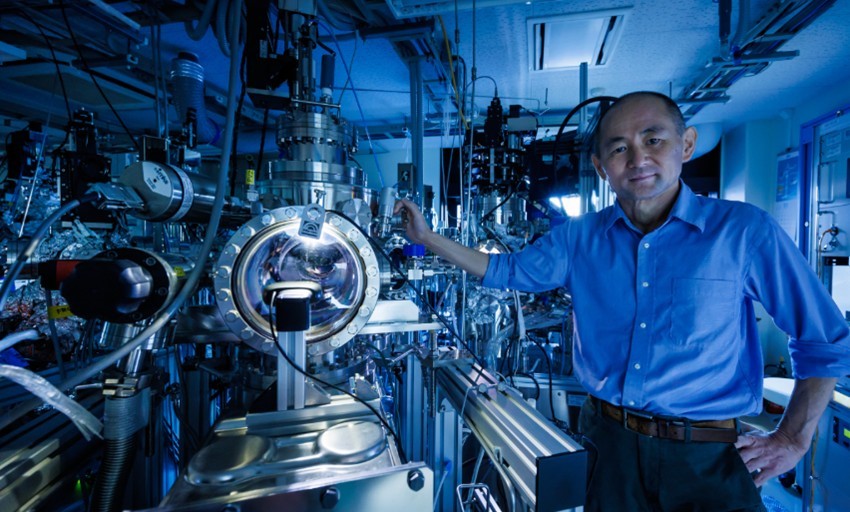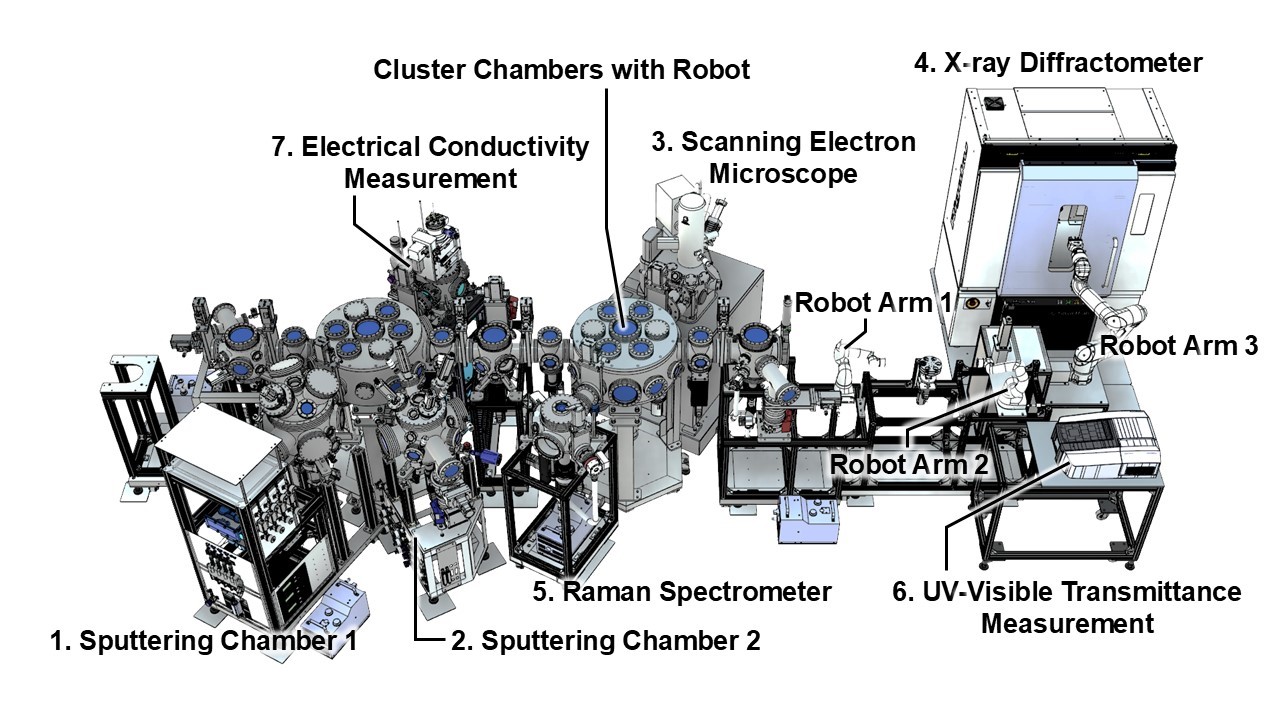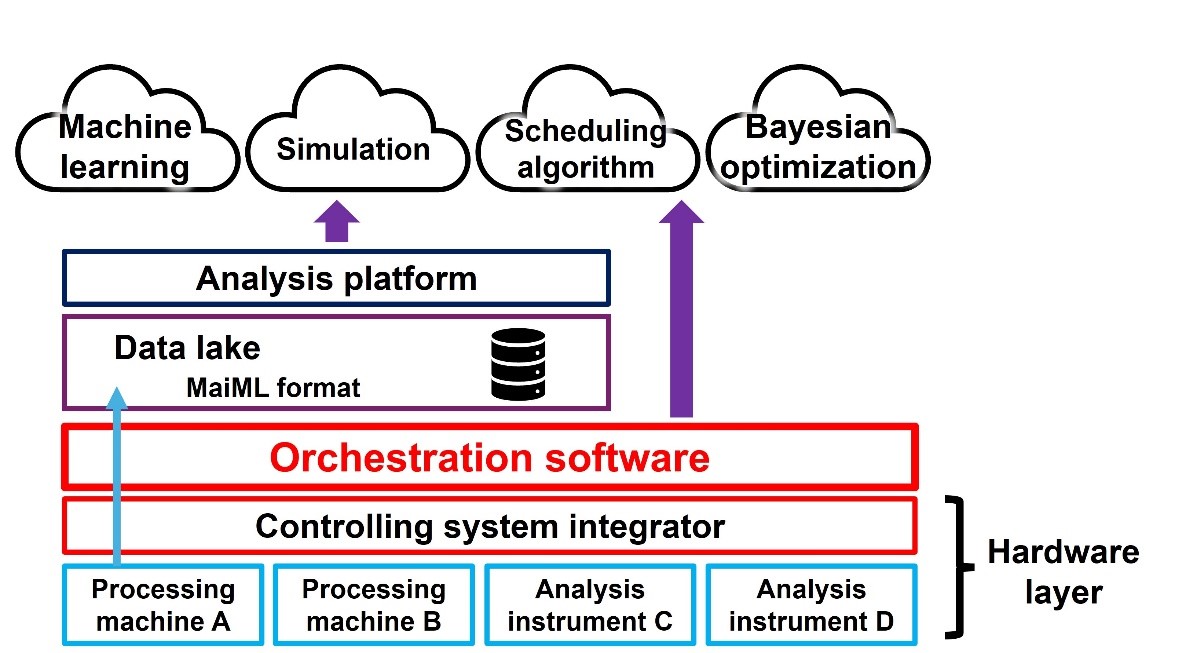
Researchers at the University of Tokyo and their collaborators have developed a digital laboratory system that fully automates the material synthesis and the structural and physical property evaluation of thin-film samples. With the digital laboratory, or dLab, the team can autonomously synthesize thin-film samples and measure their material properties. The system demonstrates advanced automatic and autonomous material synthesis for data- and robot-driven materials science.
The current research is published in the journal Digital Discovery.
Machine learning, robotics and data are deemed vital to the discovery of new materials. However, although data collection is an essential component, there is a bottleneck in that part of the experimental process.

So, researchers constructed a digital laboratory with interconnected apparatuses for solid materials research. They used robots to collect experimental data, such as synthesis processes, and measured physical properties, including measurement conditions. Their dLab consists of a variety of modular experimental instruments that are physically interconnected. This allows researchers to fully automate processes from material synthesis to a wide range of measurements for surface microstructures, X-ray diffraction patterns, Raman spectra (a chemical analysis technique using scattered light), electrical conductivity and optical transmittance.
The dLab consists of two systems. One system integrates experimental instruments to perform automated materials synthesis and measurements, while the other handles data collection and analysis. Each measurement instrument provides data outputted in an XML format data storage called MaiML, which is collected in a cloud-based database. Then, the data is analyzed by software and utilized on the cloud.
"We demonstrated that the system can autonomously synthesize a thin-film material specified by a researcher," said Professor Taro Hitosugi of the University of Tokyo's Graduate School of Science. Using dLab, his team demonstrated the autonomous synthesis of lithium-ion positive-electrode thin films and their structural evaluation via X-ray diffraction pattern measurements.

In recent years, machine learning and robotics have provided researchers with new ways to conduct automatic and autonomous experiments. "Today, laboratories are not merely the places to house experimental instruments, but rather the factories for producing materials and data, where experimental equipment operates as a system," said Hitosugi.
By assigning repetitive experimental tasks to robot systems controlled by machine learning, researchers can synthesize, measure and analyze a large number of samples, thereby generating extensive data. This data- and robot-driven science, along with the standardization of materials synthesis and measurement instruments, and the automation of data collection, will significantly impact how research is conducted.
"Our current work addresses the challenges of accelerating research in materials science," said Hitosugi. "Our approach enhances the use of data in research. We aim to create a research environment where researchers can focus on creativity. Introducing machine learning and robotics will further advance materials science, deepening theory and finding new materials."

However, even with the recent progress, the modularization and standardization in solid materials research is still rudimentary. One factor contributing to this is the lack of established standards for the shapes and sizes of samples and sample holders. Solid materials are available in a variety of physical shapes, including powder and bulk forms. Researchers need standardized sample shapes and sample holders. A unified format for measurement data is also lacking, complicating data collection. The Japan Analytical Instruments Manufacturers Association (JAIMA) has collaborated with member companies and the Ministry of Economy, Trade and Industry, to establish a data format called the Measurement Analysis Instrument Markup Language (MaiML). MaiML was registered as the Japanese Industrial Standard in 2024. This standardized format provides a unified format for data collection and use.

Looking ahead, the team hopes to improve the system by standardizing the orchestration software and scheduling. This would allow the researchers to expand the materials explorations and to manage tasks for multiple samples more efficiently. Their goal is to leverage dLab to accelerate material development. "We aim to digitalize the research and development environment, foster researchers who can utilize these technologies, and facilitate data sharing and utilization" said collaborating researcher and lead author Kazunori Nishio, a specially appointed associate professor at the Institute of Science Tokyo. "This environment will fully leverage the creativity of researchers."






